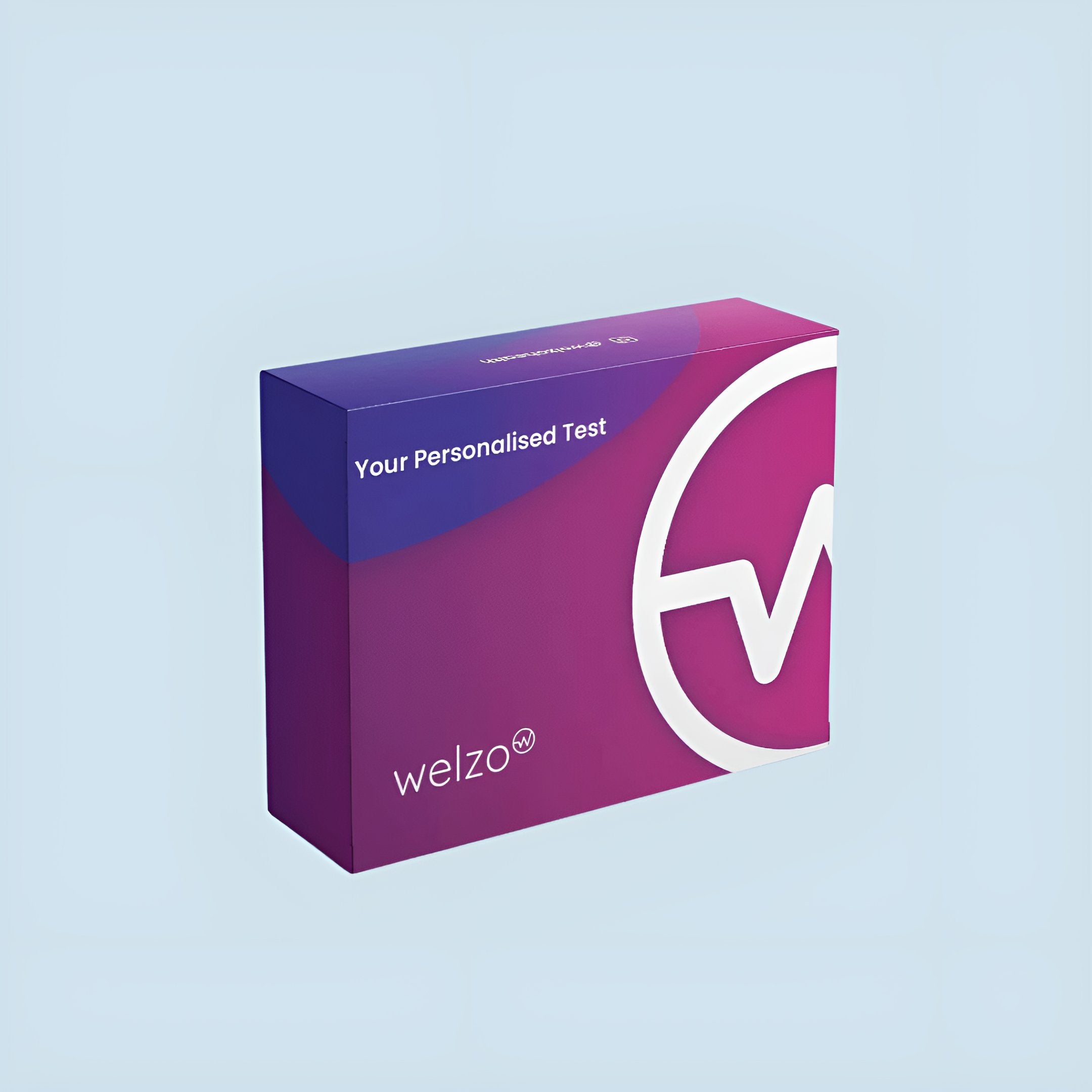
 Instagram
Instagram
What does it mean if my results say clotted?


Related products
What Is a Clotted Sample?
When you receive blood test results that mention the word "clotted", it’s not referring to a health condition or a problem with your body—it simply means the blood sample could not be analysed properly by the laboratory. A clotted sample is one in which the blood has coagulated or thickened before it could be processed for testing. Blood naturally clots as a protective mechanism in the body to prevent excessive bleeding, but in the context of laboratory testing, premature clotting prevents accurate analysis.
In most blood tests, particularly those involving finger-prick samples for at-home kits, the collected blood needs to remain in a fluid state until it reaches the lab. To achieve this, the blood is usually deposited into a tube containing an anticoagulant—a substance that stops the blood from clotting. If the sample clots before or during processing, it often means the anticoagulant did not mix properly with the blood, or the blood was not transferred or handled within the correct timeframe.
It’s important to understand that a clotted sample does not imply anything is wrong with your health. It is simply a technical issue related to how the sample was collected or handled. Unfortunately, laboratories usually cannot extract accurate results from a clotted specimen, especially for tests that rely on whole blood, like a Full Blood Count (FBC) test or any test involving blood cell measurements.
In this situation, the most common course of action is to repeat the test. While this might feel inconvenient, it's a standard part of diagnostic testing, and many people experience it—especially when using at-home test kits for the first time. Companies like Welzo offer easy-to-use kits and clear guidance to help minimise these occurrences.
Why Do Blood Samples Clot?
Blood samples can clot for several reasons, most of which are related to the handling and timing of the sample after collection. When you give a blood sample, either through a venous draw at a clinic or a finger-prick test at home, it must be transferred into a tube that either contains an anticoagulant or is specifically designed for a test that can be performed on clotted blood. If this process is delayed, not done correctly, or the sample is not mixed properly with the anticoagulant, the blood may begin to clot naturally.
In the case of at-home blood tests, the most common cause of clotting is delay or improper mixing. For example, many collection tubes need to be inverted several times immediately after the blood is added. This ensures the anticoagulant is thoroughly mixed and prevents clotting. If the sample sits too long before being sealed or posted, the likelihood of clotting increases. Temperature and humidity can also affect the speed at which blood clots, particularly if a sample is left in a warm environment or delayed during transport.
Another common issue is insufficient blood volume. If the tube isn’t filled to the correct level, the ratio of blood to anticoagulant can be off, making clotting more likely. This is particularly important for smaller finger-prick sample tubes, where a few drops too little can lead to an unviable sample. In addition, slow blood flow during collection may cause partial clotting even before the blood reaches the tube.
This is why it's so important to follow every step in the test kit instructions carefully. Using a high-quality home testing service like Welzo helps reduce the chance of sample issues, as kits are designed for ease of use, and guidance is tailored for the general public. Many of Welzo’s kits, including the Health and Lifestyle Blood Test, offer flexible collection methods and fast lab processing to limit risks associated with sample handling delays.
How Does a Clotted Sample Affect My Test?
A clotted blood sample affects the accuracy and reliability of many routine and advanced blood tests. When blood clots inside the collection tube, it means that the components of the blood—especially the cells—are no longer suspended in plasma. This makes it extremely difficult or impossible for the laboratory to isolate and analyse the individual elements needed for accurate diagnostics.
Tests such as the Full Blood Count (FBC) rely on the ability to count red and white blood cells, platelets, and other key markers in their natural, uncoagulated state. In a clotted sample, these components become trapped in the mesh of fibrin (a protein that forms during the clotting process), meaning they cannot be separated or counted accurately. This renders the test inconclusive or void, and most labs will report the result as “unsuitable” or “clotted sample,” indicating a retest is required.
Other tests may be partially affected. For example, some biochemical tests that measure substances in the plasma or serum (like creatinine or cholesterol) might still be analysed, but even then, results may be unreliable if clotting has interfered with the separation of serum from the clot. In almost all cases, if the sample is clotted, the lab cannot confidently proceed and will request a repeat sample.
This can understandably cause frustration, especially for those using home tests for convenience or speed. However, most providers, including Welzo, offer support and solutions to make the process easier the second time. In some cases, you may receive a replacement kit or guidance on how to avoid clotting next time. Proper hydration before collecting the sample, warming your hands, ensuring the lancet puncture is deep enough, and mixing the tube immediately after collection can significantly reduce the risk.
What Should I Do If My Sample Clots?
If you’ve received a message saying your sample was clotted, don’t panic—this is a common occurrence and usually not a reflection of your health, but rather a result of how the blood was collected or handled. The most important thing is to repeat the test under slightly improved conditions to ensure an accurate result can be obtained. When a test is voided due to clotting, the laboratory will not be able to proceed with the analysis. In most cases, your test provider will notify you and offer instructions for retesting. Providers like Welzo often allow you to request a replacement kit quickly and easily, helping you get back on track with minimal disruption. To avoid clotting the second time around, a few small adjustments can make a big difference. Ensure you’re well-hydrated before collecting the sample—dehydration can slow blood flow and increase the risk of clotting. Warm your hands under water or with a heat pack to stimulate circulation. When using a finger-prick test, follow the instructions carefully, including mixing the blood sample with any included anticoagulant immediately after collection. Don’t wait to post the sample—get it into the postbox as soon as possible, ideally on the same day of collection. For peace of mind, you may consider switching to a test that is less sensitive to clotting or uses a slightly different approach. For example, the Advanced Thyroid Blood Test offers quick detection of thyroid-related imbalances that may indirectly influence blood consistency and metabolism. By choosing the right test and following best practices, you can minimise the chance of repeat issues and receive reliable, actionable results on the next attempt.
At-Home Testing and Clotting: What to Know
With the rise of at-home blood tests, more people are taking control of their health from the comfort of their own homes. However, this convenience also means that sample collection and handling fall to the user, making it essential to understand the risk of clotting and how to prevent it. Unlike tests performed in clinical settings by trained professionals, at-home testing requires users to collect a sample, mix it properly with anticoagulants (if needed), and post it back to the laboratory—all without compromising its quality. Clotting typically occurs when blood is exposed to air for too long or isn’t mixed quickly enough with the anticoagulant in the collection tube. To reduce the risk, always read the instructions in your testing kit thoroughly and follow each step precisely. Use the lancet correctly to get a steady flow of blood, fill the tube to the required level, and invert it as recommended to ensure mixing. Then, post the sample on the same day using a tracked or priority mail service.
Which Tests Are Sensitive to Clotting?
Some blood tests are more vulnerable to the effects of clotting than others. These typically include tests that analyse whole blood or blood cell components, as clotting makes it nearly impossible for labs to separate and count the individual elements within the sample. Tests that rely on platelet counts, red or white blood cell analysis, or clotting factor assessment are particularly at risk. In contrast, tests that require serum or plasma may still be partially readable if clotting hasn’t progressed too far, but the accuracy may be compromised. It’s especially important to know which tests require extra care during collection, so you can ensure your sample reaches the lab in good condition. Tests involving inflammatory markers, immune response, or haematology panels—such as those measuring C-reactive protein, ESR, or white cell profiles—need uncoagulated blood to yield precise results. For individuals with ongoing health concerns like autoimmune conditions or frequent infections, this test provides key insights—but only if the sample remains intact. If you’re concerned about clotting or unsure how to handle sample collection, selecting a test with detailed support, like the Men’s Hormone Blood Test, may be beneficial. While still dependent on proper collection, it focuses on hormone levels that are less prone to fluctuation due to clotting compared to cellular measurements. Ensuring that the right test is selected and correctly performed will not only save time but deliver the accurate, clinically useful results needed to make informed decisions about your health.
Most Asked Questions and Answers
1. What does a “clotted” result mean in a blood test?
A clotted result means the blood sample began to coagulate (thicken) before it could be analysed. This typically happens when the blood was not mixed properly with the anticoagulant in the sample tube or there was a delay in posting the sample. It is not an indication of a health problem but rather a technical issue during the collection or handling process. The test must usually be repeated to obtain usable results.
2. Is a clotted sample dangerous to my health?
No, a clotted sample is not harmful. It simply means the sample cannot be processed in the laboratory due to coagulation. It does not reflect anything wrong with your blood itself or your health. The issue lies with how the sample was collected, stored, or transported—not with your body.
3. Can I prevent my blood sample from clotting?
Yes, following best practices greatly reduces the chance of clotting. These include staying hydrated, warming your hands before collection to increase blood flow, using the lancet correctly, and mixing the blood with the anticoagulant immediately after collection by inverting the tube. Also, ensure the sample is posted the same day using priority mail. Welzo test kits come with detailed instructions to support successful sample collection.
4. Will I be charged again if my sample clots?
This depends on your provider. Many reputable services, including Welzo, offer a free replacement kit or allow one retest if your initial sample is clotted. This ensures that you’re not penalised for something that can happen even with the correct technique. Contact customer support as soon as you receive the notification to arrange a retest.
5. Should I choose a different test if my sample clots repeatedly?
If you’ve experienced multiple clotted samples, consider selecting a test that is less sensitive to clotting or switch to one with additional guidance and support. The Allergy and Intolerance Test, for example, measures markers from dried blood spots, which are less prone to clotting issues. You may also want to speak with a healthcare professional for assistance with collection or to arrange a venous blood draw if needed.
Final Thoughts
Receiving a “clotted” result on your blood test can be frustrating, but it’s a common and solvable issue. It doesn’t suggest any medical problem—instead, it highlights the importance of correct sample collection and handling. With at-home testing now more popular and accessible than ever, understanding how to avoid clotting is part of learning how to manage your health proactively. Providers like Welzo offer high-quality test kits, clear step-by-step instructions, and responsive customer care, making the retesting process smoother and more supportive. Whether you're tracking fatigue, hormone levels, inflammation, or overall wellness, reliable testing is key to making informed decisions. By exploring more options in Welzo’s full online health test collection, you take control of your health journey. Remember: a single clotted sample is not a setback—it’s just a prompt to try again with better awareness and preparation. Accurate testing starts with proper collection, and you’re now equipped with the knowledge to do it right.












 Rated Excellent by 26,523+ Reviews
Rated Excellent by 26,523+ Reviews